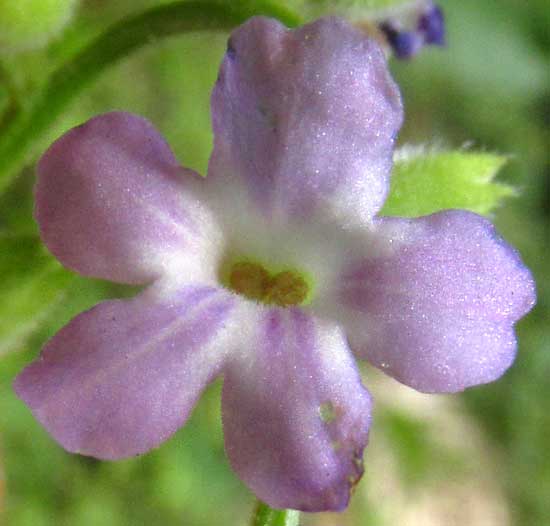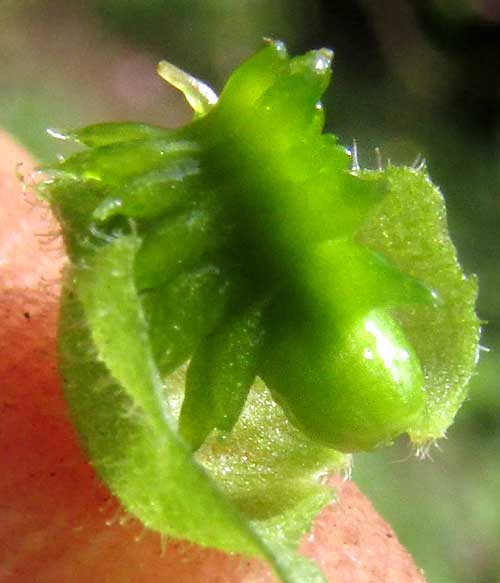Excerpts from Jim Conrad's
Naturalist Newsletter
from the August 14, 2016 Newsletter issued from Hacienda Chichen Resort beside Chichén Itzá Ruins; limestone bedrock; elevation ~39m (~128ft), N20.675°, W88.569°; central Yucatán state, MÉXICO
CAT'S-TONGUE
Right beside the hut door, a weed I didn't pull up because I wanted to see what it was, has begun flowering and fruiting, and it was worth waiting for. Below, you can see it leaning into the sunlight so that I see it when I look out the door:

The plant's opposite leaves (two at each stem node), the curve-tipped flower clusters and the purplish flowers all suggest the Verbena Family. A closer look at the five-lobed, slightly asymmetrical corollas and shallowly toothed leaves increases the impression, as shown below:

A side view of a flower is shown below:

A peep into the blossom's throat shows only two stamens, but two more are hidden lower down the corolla tube, and that's just like the Verbena Family, seen below:

However, the bladder-like pods that develop as soon as the flowers are pollinated and the corollas fall off are unusual and unlike other members of that family I can recall, seen at below:

If you tear away one side of a pod, the fruit revealed inside is about as weirdly shaped as you could want, shown below:

The literature describes the mature fruit of this species as a pair of prickly nutlets contained within the persistent calyx. Also, the fruiting calyx is reported as bearing hooked hairs that cling readily to passing by creatures. If that's the case, what do the fruit's prickles seen in our photo do? From what I can see, one of their jobs is to keep the bladder from collapsing as the fruit matures.
This is PRIVA LAPPULACEA, in at least one publication referred to as Cat's-tongue, found throughout the American tropics, extending north as far as southern Texas and Florida. In Mexico it's reported as being an "aggressive and dangerous weed" mainly in tree plantations and orchards. The online Biblioteca Digital de la Medicina Tradicional Mexicana says that traditionally a tea of Cat's-tongue along with the spiny Ortiga is drunk for the infirmity bomaje, which is a kind of hip pain.